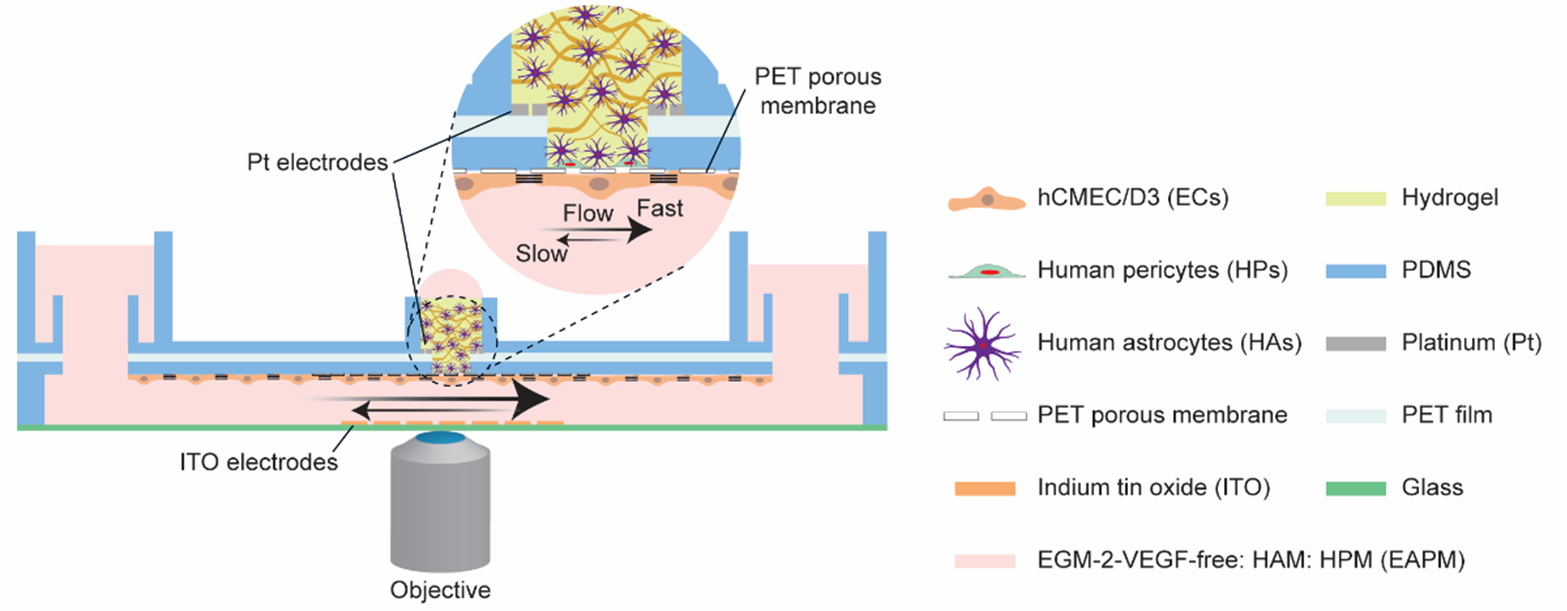New 3D in vitro blood-brain-barrier (BBB) model
Novel microfluidic BBB platform consisting of human cerebral endothelial cells, primary pericytes and astrocytes in 3D arrangement and featuring integrated, transparent electrodes for monitoring barrier tightness in real time at high resolution.


Blood-brain-barrier (BBB) disruption has been associated with a variety of central-nervous-system diseases. In-vitro BBB models enable to investigate how the barrier reacts to external injury events, commonly referred to as insults. Wei Wei et al. developed a human-cell-based BBB platform with integrated, transparent electrodes to monitor barrier tightness via impedance measuremenst and optical microscopy in real time at high resolution (W. Wei, F. Cardes, A. Hierlemann, M. Modena, "3D in vitro blood-brain-barrier model for lnvestigating barrier insults", Advanced Science 2023, Article 2205752). The BBB model includes human cerebral endothelial cells as well as primary pericytes and astrocytes in a three-dimensional arrangement within a pump-free, open microfluidic platform. With this platform, we demonstrated that oxygen-glucose deprivation (OGD), which mimics the characteristics of an ischemic insult, induced a rapid remodeling of the cellular actin structures and subsequent morphological changes in the endothelial cells. High-resolution live-imaging showed the formation of large actin stress-fiber bundles in the endothelial layer during OGD, which ultimately led to cell shrinkage and barrier breakage. Simultaneous electrical measurements evidenced a rapid decrease of the barrier impedance before the appearance of stress fibers, which indicates that the barrier function is compromised already before the occurrence of drastic morphological changes. The obtained measurement results demonstrate that our BBB platform indeed recapitulates the main barrier functions in vitro and can be used to investigate rapid reorganization of the BBB upon application of external stimuli.
